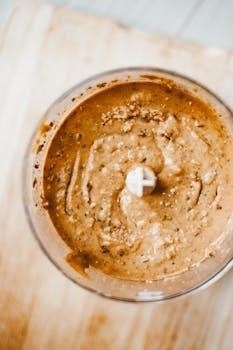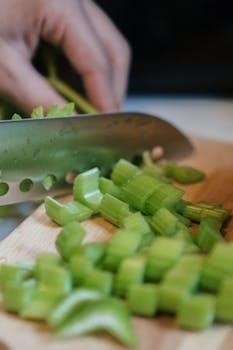tv guide scranton pa
Scranton PA TV Guide Overview
Scranton, Pennsylvania offers a variety of television options, including local broadcast channels, cable, and satellite providers. Viewers can access detailed TV listings online and through various apps, ensuring they never miss their favorite shows.
Local TV Channels in Scranton
Scranton boasts a selection of local television channels, providing residents with diverse programming. These channels include major network affiliates like ABC (WNEP-TV), CBS (WYOU), and PBS (WVIA-TV), along with other stations such as ION Television (WPXQ) and The CW (WSWB). These stations deliver a mix of news, sports, entertainment, and educational content. The area is served by six television stations, catering to a variety of viewing preferences. Viewers can receive these local channels using an antenna for over-the-air broadcasting, or through cable and satellite services. Digital television has improved the signal quality of these local channels making it easy for viewers to watch free over-the-air TV.

Availability of Broadcast TV in Scranton
Scranton offers robust over-the-air broadcast television options, allowing residents to access local channels for free with a quality antenna. This provides an alternative to paid cable or satellite services.
Over-the-Air TV Options
In Scranton, Pennsylvania, residents have access to a variety of over-the-air (OTA) television channels. These channels can be received for free using a standard TV antenna, without the need for a cable or satellite subscription. The advent of digital television has improved the viewing experience significantly, providing a clearer picture compared to the old analog signals. With digital TV, viewers can access stations like WNEP (ABC), WYOU (CBS), and other local channels, ensuring they can stay connected to local news and entertainment. The quality of the signal largely depends on the antenna used and its placement, but in general, OTA TV in Scranton is a viable option for those looking to cut costs and still enjoy local broadcasts. Using an OTA TV guide, residents can easily access the schedule for each channel to ensure they don’t miss their favorite programs.

Cable and Satellite TV Providers
Scranton residents have access to cable and satellite TV services. Xfinity is a notable cable provider in the area, offering various channel packages and services.
Xfinity Cable Services in Scranton
Xfinity provides cable television services in Scranton, PA, offering a wide array of channel lineups to suit diverse viewing preferences. They provide different package options, allowing customers to select the channels that best fit their entertainment needs. Xfinity also offers additional services such as internet and phone, often bundled with their cable packages for added convenience. Customers can explore the available channel lineups on their website by entering their address to determine the specific channels available in their area. This ensures that subscribers can find the most relevant programming for their household; Furthermore, Xfinity’s service can be accessed through set-top boxes or streaming on various devices.

TV Listings and Schedules
Scranton residents can access comprehensive TV listings and schedules through various online platforms and apps. These resources provide up-to-date information on broadcast and cable programming.
Finding Today’s TV Schedule
Locating today’s TV schedule in Scranton, PA, is straightforward with several options available. Many online TV guide services offer detailed listings for local broadcast channels. These platforms often allow users to view schedules by time, channel, or program type, making it easy to find what you’re looking for; Additionally, some local TV station websites, like WNEP (ABC) and WYOU (CBS), provide their daily schedules directly on their sites. Cable and satellite providers, like Xfinity, also offer their own TV guides, often accessible through their set-top boxes or apps. For those who prefer a more traditional approach, some print publications may still include daily TV listings. Regardless of your preference, finding today’s TV schedule in Scranton is easily accomplished.
Accessing TV Listings Online
Accessing TV listings online in Scranton, PA, is incredibly convenient, offering numerous websites and apps that provide up-to-date schedules. Several popular TV guide websites, such as tvpassport.com and nocable.org, offer comprehensive listings for local channels. These platforms allow you to filter by date, time, and channel, making it easy to find specific programs. Many local TV station websites, like WNEP and WYOU, also have dedicated sections for TV schedules. Additionally, cable and satellite providers, such as Xfinity, offer online guides through their websites and mobile apps. These digital tools often include features like program descriptions, reminders, and the ability to customize your viewing experience. With so many online options, accessing Scranton’s TV listings is simple and efficient.
Customizing TV Listings Experience
Customizing your TV listings experience in Scranton, PA, enhances your viewing pleasure by allowing you to tailor the information to your specific needs. Many online TV guides and apps offer features that let you personalize your schedule. You can typically select your preferred channels, hiding those you don’t watch. Setting reminders for upcoming shows ensures you never miss your favorites. Some platforms also allow you to create watchlists and receive notifications when specific programs air. Furthermore, you can often filter listings by genre or keyword, making it easy to discover new content. By utilizing these customizable options, you can transform your TV viewing from a passive activity into an engaging and personalized experience, all while keeping track of programming in Scranton.

Specific TV Station Information
Scranton has several key television stations, including WNEP-TV (ABC) and WYOU (CBS). These stations provide local news, entertainment, and network programming to the Scranton area.
WNEP-TV (ABC) Scranton Channel
WNEP-TV, the ABC affiliate in Scranton, Pennsylvania, broadcasts on channel 16. It is a digital full-power station owned by Tegna, serving the Wilkes Barre-Scranton market. WNEP-TV offers a wide range of programming, including local news, weather updates, and ABC network shows. Viewers can access their schedules online or through the WNEP app, which provides personalized weather information and live updates. The station’s broadcast reaches many households in the area, providing a key source of information and entertainment. You can find their TV listings for the next two weeks, allowing you to plan your viewing in advance. WNEP also provides a mobile app for your convenience. It is a significant local news source.
WYOU (CBS) Scranton Channel
WYOU serves as the CBS affiliate in Scranton, Pennsylvania, offering a variety of network and local programming to the region. While specific details about its channel number or ownership weren’t readily available in the provided text, WYOU is a key player in the Scranton television market. The station broadcasts CBS’s popular shows, along with local news coverage and community events; Viewers can find its daily and upcoming schedules through online TV guides, enabling them to stay informed about their favorite programs. To keep up-to-date, it is useful to consult listings. The station provides an important link to the community through its local content, and is a reliable source of entertainment.
Digital TV Transition
The transition to digital television has improved signal quality for over-the-air broadcasts in Scranton, making viewing more reliable. Digital technology provides clearer picture and sound compared to analog signals.
Impact of Digital TV on Scranton
The switch to digital television significantly impacted Scranton by enhancing the quality of over-the-air broadcasts. Prior to the digital transition, viewers often struggled with weak and distorted analog signals, requiring constant adjustments to antennas. The advent of digital TV brought clearer pictures and sound, making local broadcast channels more enjoyable and reliable. This change also expanded the availability of subchannels, offering more programming options for free. While some older televisions needed converter boxes to receive digital signals, most modern TVs can readily access these improved broadcasts; Furthermore, the digital era has facilitated the integration of TV with online platforms and apps, allowing viewers in Scranton to access TV listings and schedules conveniently, thus creating a more user-friendly TV viewing experience.
Additional Information
The University of Scranton provides its own on-campus cable television service, featuring both regular programming and local university content. There are also other local stations providing unique content to viewers.
University TV Programming
The University of Scranton operates its own video network, functioning as an on-campus cable television provider. This network offers a unique blend of programming, supplementing regular television channels with locally produced content. The university’s video network serves academic and administrative buildings, as well as student residence halls and some on-campus houses, ensuring broad accessibility for the university community. In addition to standard television programming, the network features dedicated local channels specifically for university-related shows, including campus events, student-produced content, and educational programming. This service is an integral part of the university’s integrated network, enhancing both academic and campus life. This allows students to stay informed about university activities and events, as well as enjoy various shows;
Other Local TV Stations
Besides the major network affiliates like ABC and CBS, Scranton is served by several other local television stations, offering a diverse range of programming. These stations include WVIA, a PBS affiliate, which provides educational and public interest content and also offers a 24/7 PBS Kids channel, plus WVIA Create. Additionally, there’s ION Television WPXQ, and CW affiliate WSWB, catering to different viewer preferences with movies, syndicated shows, and network programming. These stations, along with others in the area, contribute to a wide variety of viewing options for residents, whether accessed through over-the-air antennas, cable, or satellite providers. Viewers can find their channel lineups through their specific cable or satellite providers.















